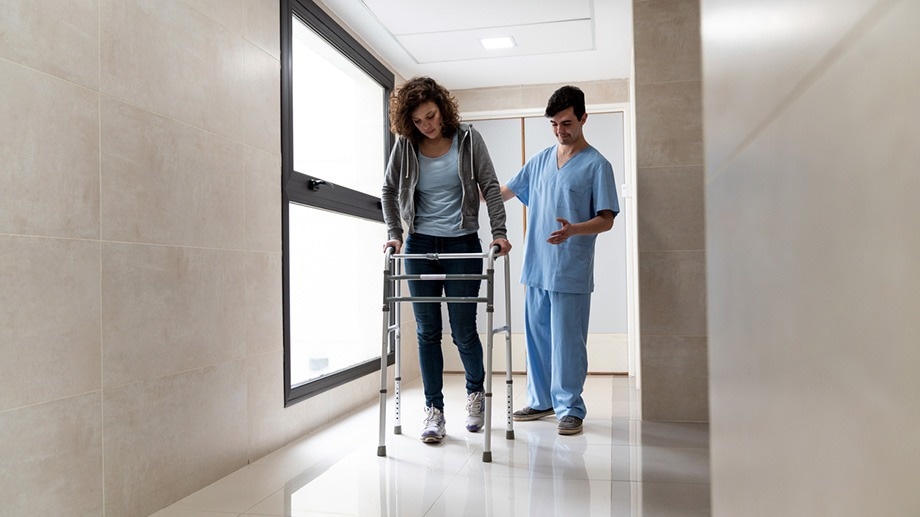Transplanting blood stem cells is a new but incredibly successful treatment for multiple sclerosis. Now, a study directed by the University of Zurich has looked closely at how the autoimmune disease is controlled by the treatment and how the immune system recovers afterward.
 Blood stem cell transplantation is currently the most effective therapy for the treatment of multiple sclerosis. Image Credit: iStock/Hispanolistic
Blood stem cell transplantation is currently the most effective therapy for the treatment of multiple sclerosis. Image Credit: iStock/Hispanolistic
A deeper comprehension of these mechanisms should aid in the treatment strategy’s acceptance, which is currently restricted to a small number of nations.
One person in Switzerland receives a multiple sclerosis diagnosis each day. The myelin sheath of the nerve cells in the brain and spinal cord is attacked by the body’s immune system in MS, an autoimmune disease. Paralysis, pain, and ongoing fatigue are just a few of the symptoms of the disease.
There have been significant advancements in therapies in recent years. A stem cell transplant is the most successful treatment currently available, and a study by the Department of Neuroimmunology and MS Research at the University of Zurich (UZH) and the Department of Medical Oncology and Hematology Clinic at the University Hospital Zurich (USZ) has now identified why it works so well.
Wiping out unwanted immune cells
80% of patients remain disease-free long-term or even forever following an autologous hematopoietic stem cell transplant.”
Roland Martin, Study Last Author and Full Professor, Neurology and Neuroimmunology, University Zürich
For younger patients with more severe diseases, the treatment is particularly fitting. Martin’s department and the USZ clinic received approval to use the therapy four years ago because of the high effectiveness of the treatment and the now-low mortality rate. It is the only clinic in Switzerland with authorization to provide this therapy.
The immune system of the patients is entirely destroyed during treatment, including the subset of T cells that erroneously target their own nervous system.
Following the chemotherapy, the patients receive a transplant of their own blood stem cells that were taken before. These cells are used by the body to create an entirely new immune system devoid of autoreactive cells.
Systematic analysis of immune cells
Martin stated, “Previous studies have shown the basic workings of the method, but many important details and questions remained open.”
What precisely happens after the immune cells are destroyed, whether any of them survive chemotherapy, and whether autoreactive cells actually do not reappear were some of the unclarified issues.
Martin’s team examined these issues in the recently released study by systematically examining the immune cells of 27 MS patients who underwent stem cell therapy in Zurich. Prior to, during, and up to two years after treatment, the analysis was conducted. This gave the researchers the ability to monitor how quickly the various immune cell types recovered.
Successful reset of the immune system
Interestingly, the memory T cells that keep the body alert to pathogens and prepared to act quickly in the event of a new infection returned right away after the transplant.
Further investigation revealed that although these cells had survived the chemotherapy, they had not grown back. Despite this, there is no chance that the original immune system remnants will cause MS to recur.
Martin explained, “They are pre-damaged due to the chemotherapy and therefore no longer able to trigger an autoimmune reaction.”
The body gradually creates various types of immune cells in the months and years after the transplant. The thymus gland is crucial to this procedure. The T cells learn how to differentiate between foreign structures like viruses and the body’s own here, in a sense.
“Adults have very little functioning tissue left in the thymus. But after a transplant, the organ appears to resume its function and ensures the creation of a completely new repertoire of T cells which evidently do not trigger MS or cause it to return,” Martin stated.
Further studies needed for wider approval
These results have given researchers insight into why stem cell transplants are typically so successful. Martin laments the fact that there are not enough phase III studies to justify the treatment’s approval in many nations.
Martin stated, “Phase III studies cost several hundred million euros, and pharmaceutical companies are only willing to conduct them if they will make money afterward.”
With stem cell therapy, this is not the case since the drugs used are no longer covered by patents.
“I am therefore very pleased that we have succeeded in obtaining approval for the treatment from the Federal Office of Public Health and that health insurers are covering the costs,” Martin added.
Many MS patients from Switzerland previously had to fly to Moscow, Israel, or Mexico to receive transplants.
Source:
Journal reference:
Ruder, J., et al. (2022). Dynamics of T cell repertoire renewal following autologous hematopoietic stem cell transplantation in multiple sclerosis. Science Translational Medicine. doi.org/10.1126/scitranslmed.abq1693